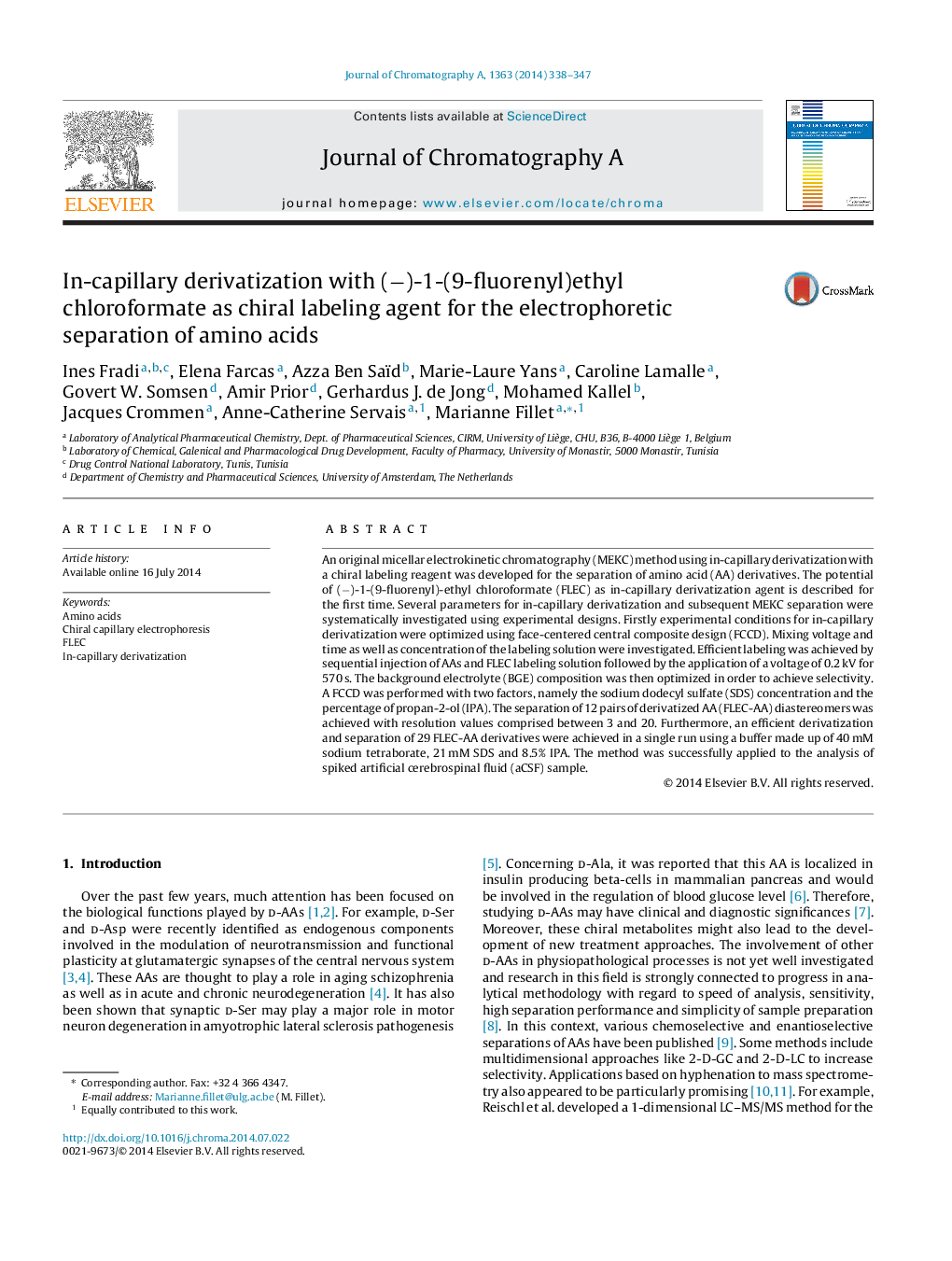| Article ID | Journal | Published Year | Pages | File Type |
|---|---|---|---|---|
| 1199189 | Journal of Chromatography A | 2014 | 10 Pages |
•In-capillary derivatization of amino acids with chiral labeling reagent.•Optimization of the derivatization and the separation by experimental design.•Comparison of pre- and in-capillary derivatization performances.•MEKC conditions for the separation of 29 FLEC-AA derivatives.
An original micellar electrokinetic chromatography (MEKC) method using in-capillary derivatization with a chiral labeling reagent was developed for the separation of amino acid (AA) derivatives. The potential of (−)-1-(9-fluorenyl)-ethyl chloroformate (FLEC) as in-capillary derivatization agent is described for the first time. Several parameters for in-capillary derivatization and subsequent MEKC separation were systematically investigated using experimental designs. Firstly experimental conditions for in-capillary derivatization were optimized using face-centered central composite design (FCCD). Mixing voltage and time as well as concentration of the labeling solution were investigated. Efficient labeling was achieved by sequential injection of AAs and FLEC labeling solution followed by the application of a voltage of 0.2 kV for 570 s. The background electrolyte (BGE) composition was then optimized in order to achieve selectivity. A FCCD was performed with two factors, namely the sodium dodecyl sulfate (SDS) concentration and the percentage of propan-2-ol (IPA). The separation of 12 pairs of derivatized AA (FLEC-AA) diastereomers was achieved with resolution values comprised between 3 and 20. Furthermore, an efficient derivatization and separation of 29 FLEC-AA derivatives were achieved in a single run using a buffer made up of 40 mM sodium tetraborate, 21 mM SDS and 8.5% IPA. The method was successfully applied to the analysis of spiked artificial cerebrospinal fluid (aCSF) sample.
